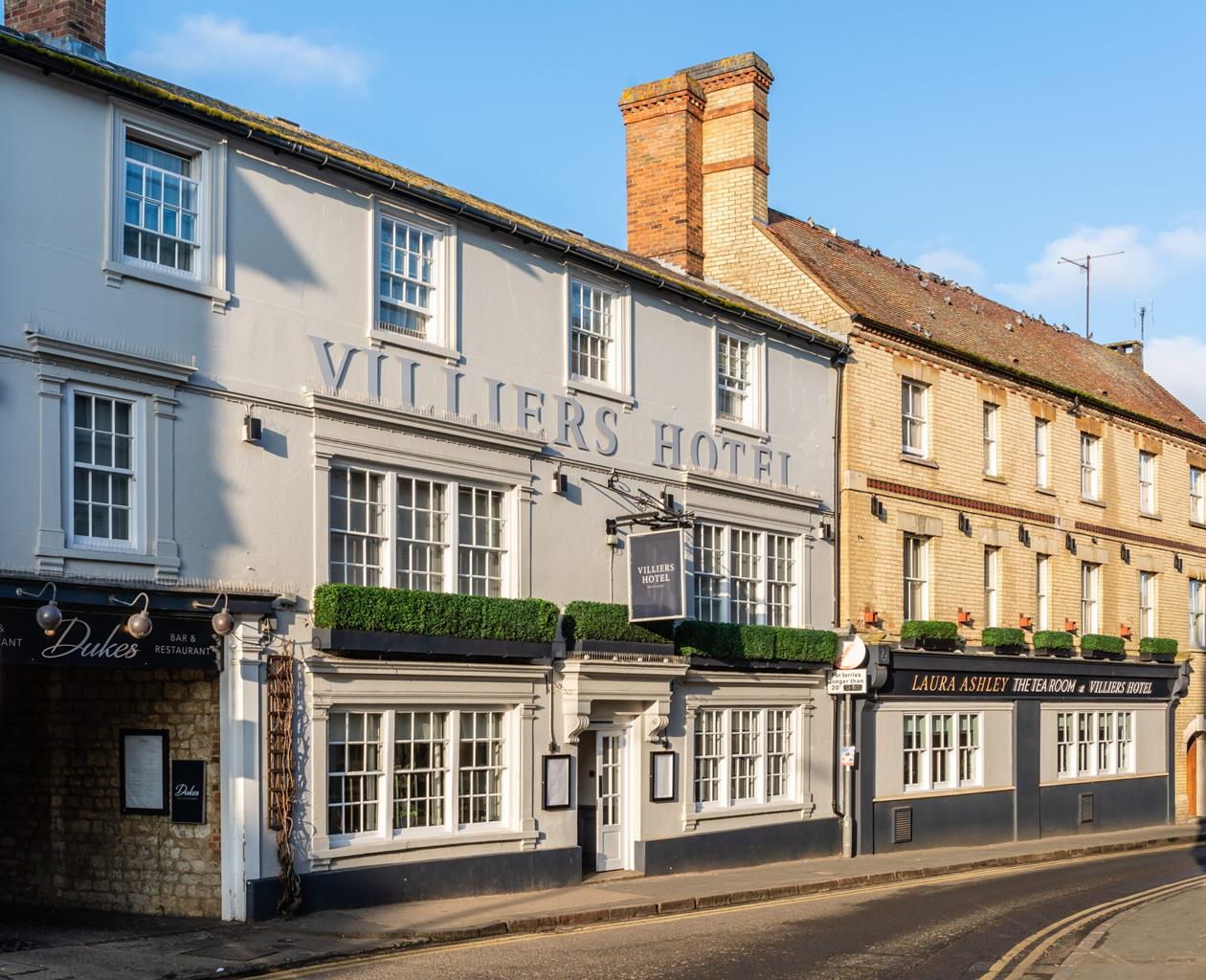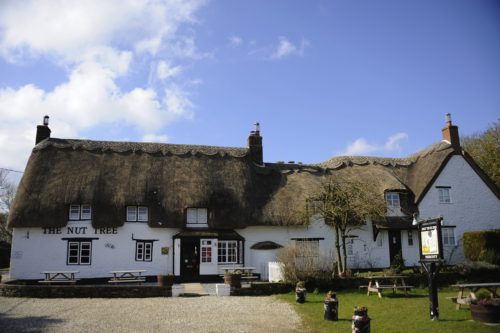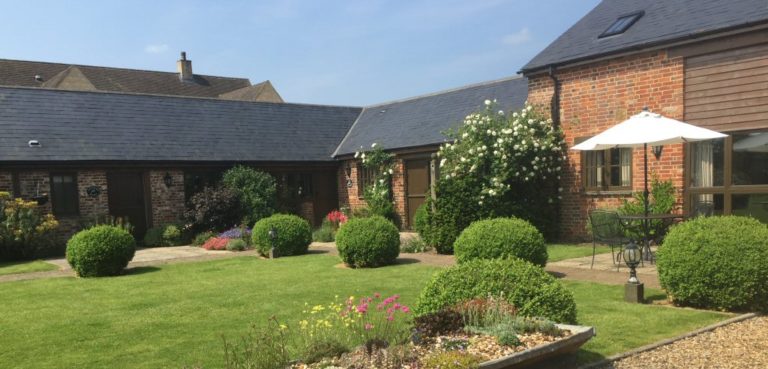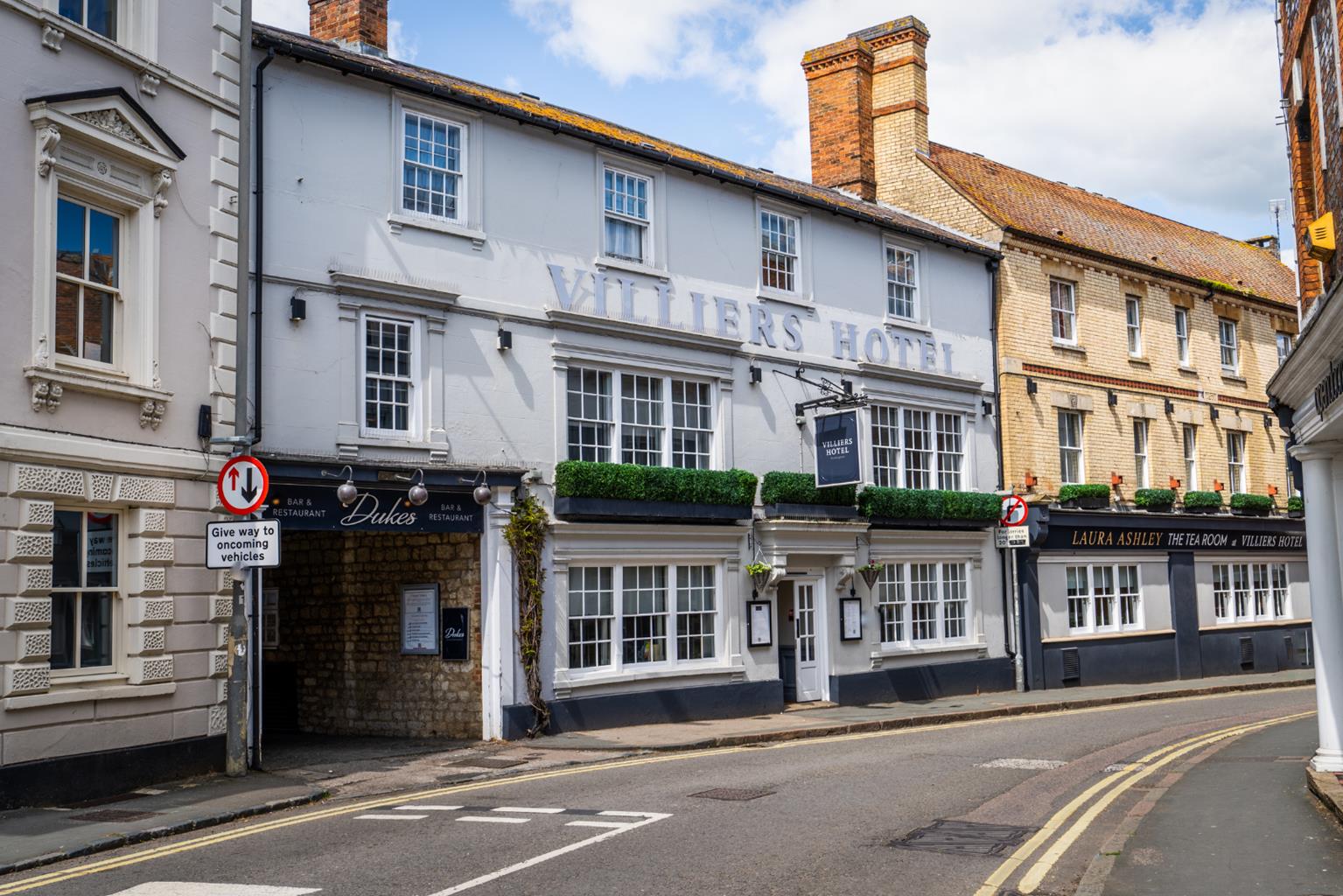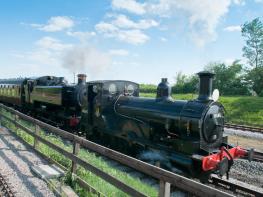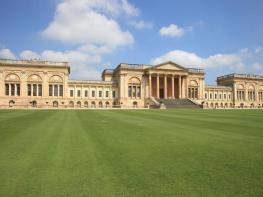This Grade II listed building, with its elaborate Elizabethan-style chimney stacks, stands at…
Around the Claydons

5.5 miles (8.8kms)
About the walk
Standing amid elegant parkland, studded with cedar, oak, horse chestnut, holm oak and Wellingtonia trees, 18th-century Claydon House replaced an earlier building and is now in the care of the National Trust. Only one third of the house remains, and on seeing it for the first time you may be struck by its simplicity – yet its interior holds a series of magnificent and distinctive rococo state rooms with carving by Luke Lightfoot. You can also see the bedroom used by Florence Nightingale (1820–1910) during visits to her sister, who lived here.
Claydon House
In 1620 Edmund Verney, Knight-Marshal and Standard Bearer to Charles I, became the first Verney to occupy Claydon. Later, during the 18th century, the family succeeded to an earldom, and Edmund's great-great-grandson, Ralph, 2nd Earl Verney, began to remodel the Tudor manor house, attempting to outdo nearby Stowe. This work still forms the core of the three-storey brick east wing, although the design has disappeared as a result of successive rebuilding.
Ralph also added the stone-faced west wing, employing the services of the unknown Luke Lightfoot, an eccentric and enigmatic figure who had acquired certain skills as a craftsman and was variously described as a cabinetmaker, carver, architect and surveyor. However, there was a darker side to Lightfoot. He was also a swindler, which almost certainly came to light just as his work was nearing completion, for he was dismissed in 1769. Undeterred, Verney continued with his building plan, though now beset by financial problems. He added a domed entrance hall to the west wing and beyond that a ballroom, but died soon after in 1791, penniless and miserable. His niece, Lady Fermanagh, inherited Claydon and within a year she had demolished her uncle's precious ballroom and entrance hall. The house was bequeathed by the Verney family to the National Trust in 1956.
The lady with the lamp
Florence Nightingale, whose sister married Sir Harry Verney, was a frequent visitor to Claydon between the late 1850s and 1895. She would often spend her summers at the house, and over the fireplace in her bedroom is a portrait of her by W. B. Richmond. Adjacent to it is a watercolour by Alfred E Chalon depicting Florence with her sister and their mother. A museum displays Verney family mementoes and objects associated with Florence Nightingale and her experiences during the Crimean War.
Walk directions
Walk along Church Way, past the Winslow road, to the village centre and keep right at the next junction, following Sandhill Road. Pass a row of houses, set back from the road on the right, and swing left just before a brick-and-timber cottage to pass through a kissing gate beside a galvanised gate. Go straight ahead towards a wooden gate and waymarker. Go through it and continue ahead in the field, with the boundary on your right. Make for a gate in the corner and cross the next large field, straight ahead through the middle of it, making for a clump of trees. Veer to the right of the trees and continue ahead with the hedgerow on the left. Turn left onto the road, with Home Farm directly opposite and a cemetery to your left.
Follow the road for 600yds (549m), passing the entrance to Home Farm on the right and a footpath on the left. Go round two bends, then turn left and follow the drive to Claydon House. Nearing the house, bear right at a waymarker post, go right through a gate right by the house, then turn left alongside the house and its ha-ha. Keep the house and the church on your left and continue, with its lakes and parkland over to your right. Cut straight ahead through the park to reach a gate, merge with the drive to Claydon House and follow it out to the road.
Turn right and pass a lay-by. Continue along the roadside until you reach a stile in the left boundary. Head diagonally left across a large field, towards a hedge corner, and then, maintaining the same direction, make for the extreme left corner of Home Wood. Cross a stile into the next field. Veer half left, with the woodland edge on your right, passing left of a small pond to a gap in the hedge with a waymarker post and a plank bridge. Make for a gate and stile ahead and cross a tarmac drive to Muxwell Farm.
Beyond a gate, head diagonally left and look for a waymarker in the line of trees across the pasture. Veer right in the next field, making for a stile and post in the boundary. Walk diagonally right across the field to the far corner, pass through a gap and keep to the right edge of the pasture. Bear right at a gateway to a track and turn left. Walk along to the road and turn right.
Walk through picture-postcard Botolph Claydon and bear left at the junction, following the signs for East Claydon and Winslow. Pass Botolph Farmhouse, the village library and hall, a clocktower and an unusual thatched circular seat built round a tree. Around 50 paces beyond the latter follow the pavement right towards a playground. This path leads back to the church at East Claydon.
Additional information
Field paths and tracks, several stretches of road, 3 stiles
Gentle farmland and parkland in the Vale of Aylesbury
Dogs on lead at all times around livestock
OS Explorer 192 Buckingham & Milton Keynes
On-street parking in road leading to St Mary the Virgin Church, East Claydon
None on route, but Claydon House for visitors
WALKING IN SAFETY
Read our tips to look after yourself and the environment when following this walk.
Find out more
Also in the area
About the area
Discover Buckinghamshire
Buckinghamshire is a land of glorious beech trees, wide views and imposing country houses. Victorian Prime Minister Benjamin Disraeli savoured the peace and tranquillity of Hughenden Manor, while generations of statesmen have entertained world leaders at Chequers, the Prime Minister’s rural retreat. Stowe and Waddesdon Manor are fine examples of even grander houses, set amid sumptuous gardens and dignified parkland.
The Vale of Aylesbury is a vast playground for leisure seekers with around 1,000 miles (1,609km) of paths and tracks to explore. Rising above it are the Chiltern Hills, a designated Area of Outstanding Natural Beauty covering 308sq miles (798sq km). They are best appreciated in autumn, when the leaves turn from dark green to deep brown. In the southeast corner of the Chilterns lie the woodland rides of Burnham Beeches, another haven for ramblers and wildlife lovers. Although the county’s history is long and eventful, it’s also associated with events within living memory. At Bletchley Park, more than 10,000 people worked in complete secrecy to try and bring a swift conclusion to World War II. Further south, an otherwise unremarkable stretch of railway line was made infamous by the Great Train Robbery in the summer of 1963.
Nearby stays
Restaurants and Pubs
Nearby experiences
Recommended things to do
Why choose Rated Trips?
Your trusted guide to rated places across the UK
The best coverage
Discover more than 15,000 professionally rated places to stay, eat and visit from across the UK and Ireland.
Quality assured
Choose a place to stay safe in the knowledge that it has been expertly assessed by trained assessors.
Plan your next trip
Search by location or the type of place you're visiting to find your next ideal holiday experience.
Travel inspiration
Read our articles, city guides and recommended things to do for inspiration. We're here to help you explore the UK.


